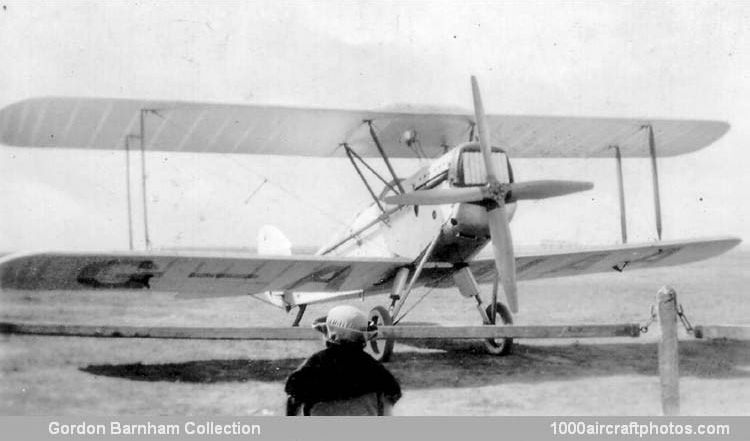The D.H.37 was powered by a Rolls-Royce Falcon III engine acquired from the ADC. Construction was of wood with ply-covered fuselage and fabric flying surfaces. The two passengers were located in a cockpit in front of the pilot, with a sliding hatch which could be closed when it was unoccupied.
Registered G-EBDO, Alan Butler's D.H.37 was named Sylvia after his sister, and it performed well with an endurance 5.5 hours, a cruising speed of 105 mph (168 kmh) and it could climb to 10,000 ft (3,050 m) in 11 minutes. The aircraft was therefore also suitable for sporting events as well as touring, gaining fifth place in the 1922 King' s Cup and third place in 1924 and 1925 in the same race.
The Falcon engine was replaced in 1926 by a 30 lb (13.6 kg) lighter ADC Nimbus engine which developed an additional 25 hp. In this form it became the D.H.37A, named Lois after Butler's wife, and its performance in races was much improved. Regrettably it was written off in a crash near Bournemouth on 4 June 1927 while practicing for a race, killing the passenger and injuring the pilot. Alan Butler was not flying it that day.
A second D.H.37 was built for the Controller of Civil Aviation in Australia, and left Britain by ship on April 14, 1924. It was also used for touring and racing, becoming the first aircraft on the Australian register as G-AUAA on July 1, 1924. Subsequently it was reregistered to the Guinea Gold (NL) Ltd at Adelaide, South Australia, and commenced flying on busy communications routes around New Guinea, but crashed at Wau, New Guinea, on January 1, 1928.
The aircraft was repaired and on April 22, 1929, it was reregistered as VH-UAA, subsequent owners were citizens of New South Wales: H.D. McGilvery of Sydney, F.T. O'Dea of Roseville, and R. Wylie of Mascot. The aircraft crashed into the sea off Crowdy Head on March 25, 1932 and was lost. The following data relate to the D.H.37A."
